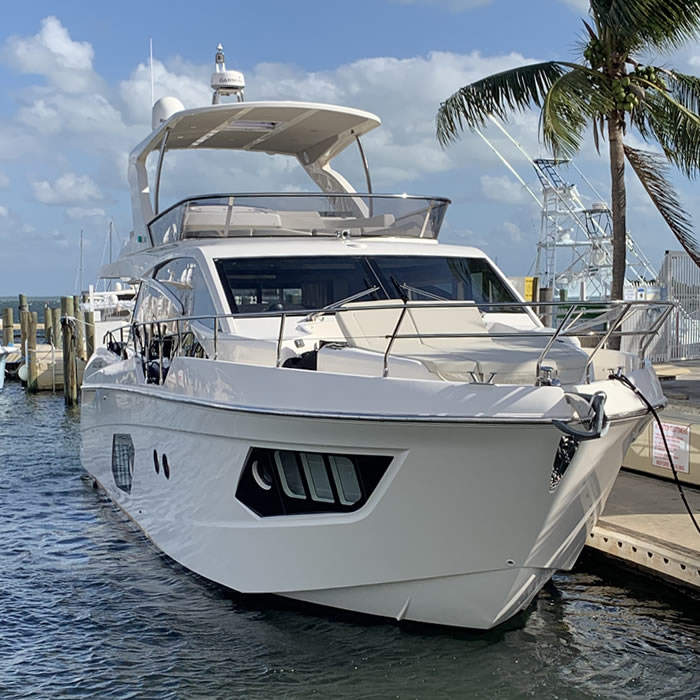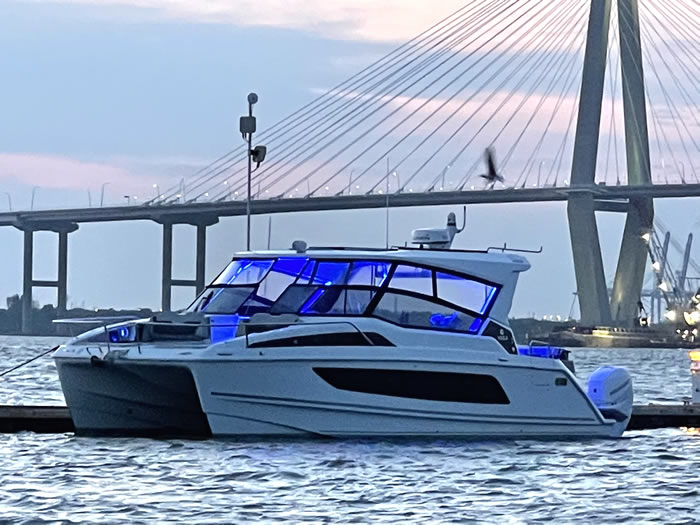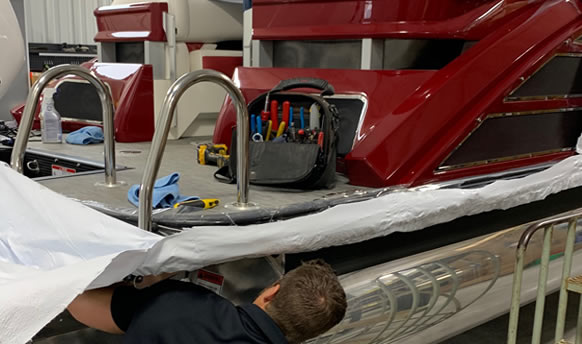Hull Shield ultrasonic anti-fouling products have been working to keep boats clean for years. No matter the port or destination, Hull Shield systems have been deployed worldwide with great success. You can read about some of our recent projects and case studies below. We conduct field tests on various hull types and materials as an ongoing effort to measure (in situ), the performance of our ultrasonic anti-fouling products. Test results are used to ensure, and improve, the effectiveness of the technology and product line.
Absolute 50 FLY

The Absolute 50 Fly featured in these results belongs to a customer who has had the Hull Shield system for over a year. The boat, which has been docked in Charleston, South Carolina is a mono-hull with 49’ of length,14‘ 6” of beam, and 3’ 10” of draft. The Hull Shield systems were installed in the spring of 2021. The boat received no additional bottom cleaning maintenance during the testing period.
Aquila 36

Our most recent project boat is an Aquila 36 Sport Power Catamaran, docked in Mt. Pleasant, South Carolina. Hull Shield systems were installed on the catamaran in the summer of 2021. The boat received no additional bottom cleaning maintenance during the testing period.
Royal Thai Navy

Hull Shield worked with maritime contractors in Thailand to design and deploy ultrasonic anti-fouling solutions for the Royal Thai Navy. Design solutions have been developed which provide comprehensive anti-fouling protection for the TOR 994 Class of Royal Thai Navy “Fast Attack” vessels. The GAT Group develops robust industrial-grade ultrasonic solutions for demanding applications in the commercial and governmental sectors.
Bennington Pontoon Testing

The GAT Group has collaborated with Bennington boats, a subsidiary of Polaris, to test the efficacy of the Hull Shield ultrasonic driver system when installed on aluminum pontoons. Aluminum boat owners have limited bottom paint options due to the galvanic corrosion resulting from a primary anti-fouling used in bottom paint – copper oxide. This study implemented multiple test configurations to determine optimal design and installation practices of the Hull Shield HS75 system such as transducer placement, frequency response, and power configurations.
